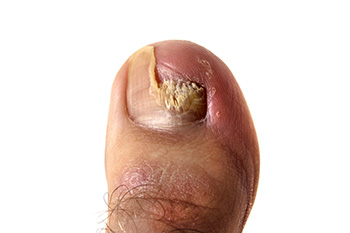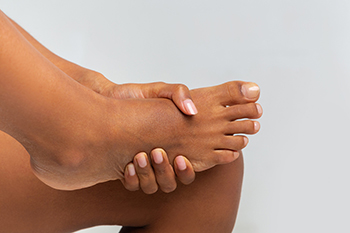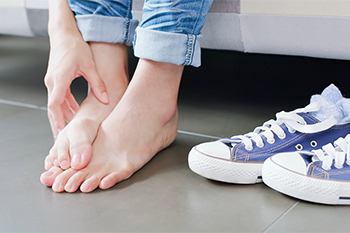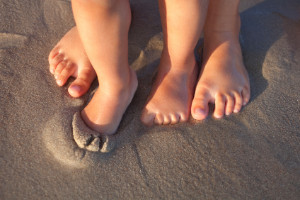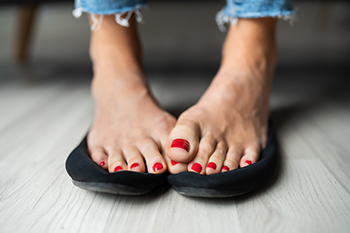
If feet sweat excessively, especially when participating in high intensity exercise, it may be from a condition called plantar hyperhidrosis. Besides sweaty feet being uncomfortable and embarrassing, this condition can also increase the risk of other problems, including foot odor, athlete’s foot, and toenail fungus. Things that can help with sweaty feet include wearing socks made of breathable material, like cotton, using antifungal powder or cornstarch to help keep feet dry and odor-free, and choosing shoes that fit properly and are right for the activity being done. Shoes made of patent leather or plastic should be avoided, as they trap sweat inside the shoe. If your feet sweat excessively and it is causing you discomfort or embarrassment, it is suggested that you see a chiropodist for a proper diagnosis and treatment options.
Plantar hyperhidrosis is a medical condition that causes excessive sweating of the feet. This problem is not only embarrassing but can also cause a variety of foot health problems if left untreated. Fortunately, there are many effective treatments available for plantar hyperhidrosis. If you have very sweaty feet, please consult with one of the chiropodists from The Footcare Centre. Our chiropodists can help you maintain the health of your lower limbs and your mobility.
Signs & Symptoms
Excessive foot sweat
Sweating from both feet
Slipping out of shoes due to sweat
Damp footprints
Ruined shoes
Frequent foot infections
Friction blisters
Whitish foot color
Wrinkly, pruney feet
Cold feet
Strong odor
Treatment Options
Topical antiperspirants - Powders, creams, or gels that are applied directly to the feet to prevent sweating; can be over the counter or prescription strength
Oral medications - Pills taken by mouth to reduce sweating temporarily
Iontophoresis - A procedure that uses a mild electrical current conducted through water to reduce activity in hyperactive sweat glands
Botox - Injected into the feet to prevent activation of sweat glands
In addition to these treatment options, footwear modifications, such as wearing shoes and socks made of breathable or moisture-wicking materials, are also suggested. If you have any questions, please feel free to contact our office located in . We offer the newest diagnostic and treatment technologies for all your foot care needs.
